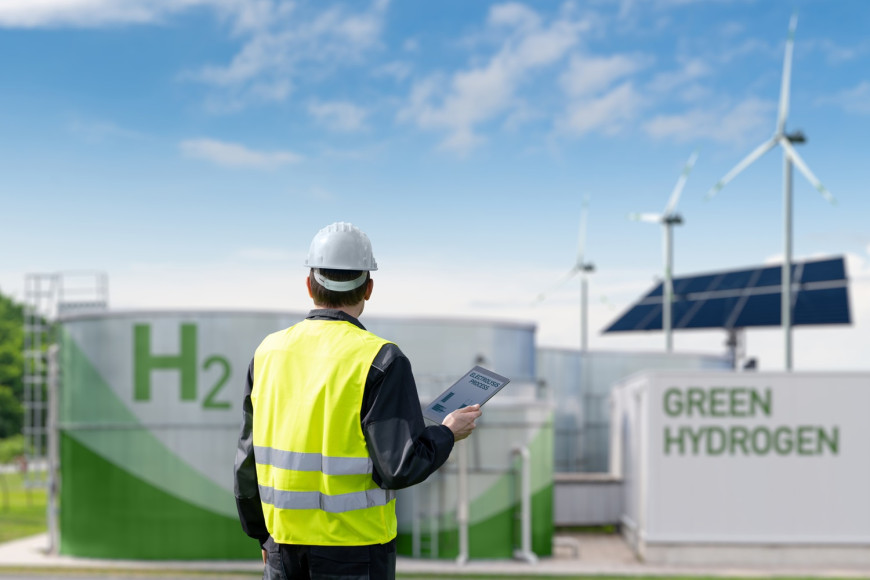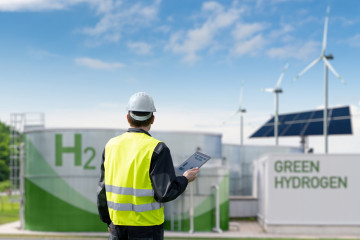Amid the global shift towards sustainable energy sources, ammonia has emerged as a compelling candidate for hydrogen production. Its potential for contributing to a greener future is significant, but this potential comes with critical considerations for safe production, storage, and utilization practices. These considerations are not only influenced by national regulations but also shaped by universal environmental, health, and safety standards.
In our recent webinar, “How Safe Practices Can Protect Ammonia’s Role in the Energy Transition,” Chris Meyer, Energy Segment Leader at Antea Group USA, moderates a discussion on this topic with Monique Berrevoets-Steenbakker, Strategic Consultant at Antea Group Netherlands, and Ray Wheeler, Consultant at Antea Group USA. Together, they discuss international best practices for using hydrogen and ammonia, as well as the status of existing US regulations and best practices.
Missed the webinar? Watch it on demand!The Global Perspective on Hydrogen and Ammonia
With the climate crisis intensifying, as underscored by the 2023 Climate Change Report from the IPCC panel, there is an urgent need to explore green energy sources beyond fossil fuels. For example, the IPCC report indicates that the climate crisis is negatively affecting food production already, with more negative impacts expected in the future. So, the necessity of acting is already here. We have to search for green energy and try to regain energy from sun, wind, or hydropower instead of relying on oil or fossil fuels.
However, the transition to green energy is filled with challenges, particularly in meeting energy demands. Hydrogen can be used as a green energy source, but densely populated areas like Western Europe don’t have enough to meet their energy demands. So, they must import it from other countries, but it’s very difficult and expensive to transport over large distances.
Ammonia emerges as a key player in this scenario, since it is a hydrogen carrier. There are other hydrogen carrier options, but none are as efficient in storage and transport capabilities, so it is currently the best choice. However, it still comes with challenges, as it requires about four to five times more storage space to replace fossil fuels, necessitating large storage facilities and robust safety measures.
Safety and Public Perception
While Ammonia has strong potential, there are some cons due to safety concerns and public perception. Despite its century-long use in the fertilizer industry, the public remains wary of its large-scale application in the energy sector. Incidents in the past have eroded trust.
For example, a 2004 incident in Kingman, Kansas, involved an ammonia release that caused significant environmental damage, although no human casualties were reported. More recently, a 2022 train derailment in Europe led to over 50 hospitalizations and two fatalities, highlighting the risks associated with ammonia transport. Cases like these have created more fear in the public, leading to protests against ammonia transport, as well as resistance from authorities who no longer want to even consider ammonia in energy transition. All in all, there is a pressing need to restore confidence through transparent safety practices and effective risk communication.
The Risks of Ammonia and Hydrogen
Both ammonia and hydrogen pose significant risks that must be carefully managed. Ammonia is acutely toxic, corrosive to the eyes and skin, and has a high potential for causing frostbite due to its cryogenic nature. Its toxic clouds can travel several kilometers, making accidental releases particularly hazardous to nearby populations and environments.
Hydrogen, on the other hand, is highly flammable and has a very low ignition energy. It can explode over a wide concentration range (LEL of 4% to UEL of 77%), making it extremely dangerous in confined spaces. The Hindenburg disaster in 1937 is a stark reminder of hydrogen's explosive potential.
Additionally, hydrogen flames are invisible, posing a risk of undetected exposure to workers who may not even realize a flame is there. For example, a hydrogen explosion at a facility in Waukegan, IL in 2018, resulted in four fatalities and multiple other serious injuries. This is another case that highlights the risks of hydrogen use that must be managed to prevent similar tragedies.
Regulatory Frameworks and Best Practices
The successful implementation of ammonia in the energy transition hinges on stringent regulatory frameworks and adherence to best practices. In the Netherlands, new guidelines such as the PGS12 for large-scale ammonia storage emphasize prevention over mitigation. These guidelines, aimed at ensuring high safety standards, could serve as models for global implementation.
In the US, approximately 85% of anhydrous ammonia is used as fertilizer in the agriculture industry. The next largest usage is as a refrigerant to seal systems for keeping food frozen. As such, the U.S. has some regulations in place such as OSHA's Process Safety Management (PSM) standard and the EPA's Risk Management Plan (RMP) rule. These frameworks mandate comprehensive safety measures for handling hazardous substances like anhydrous ammonia and hydrogen.
Moving Forward
Both anhydrous ammonia and hydrogen have been integral to industrial processes for over a century. Their safe usage is governed by well-established regulations and industry standards. However, given their inherent hazards, maintaining high levels of risk management is crucial. One incident is too many, and the goal should always be zero incidents.
In conclusion, ammonia holds great promise as a hydrogen carrier in the global energy transition. However, its potential can only be fully realized through rigorous safety practices, robust regulatory frameworks, and effective public engagement. By learning from past experiences and adopting best practices, we can harness the benefits of ammonia while ensuring a safe and sustainable energy future.
Want more news and insights like this?
Sign up for our monthly e-newsletter, The New Leaf. Our goal is to keep you updated, educated, and even a bit entertained as it relates to all things EHS and sustainability.
Have any questions?
Contact us to discuss your environment, health, safety, and sustainability needs today.





